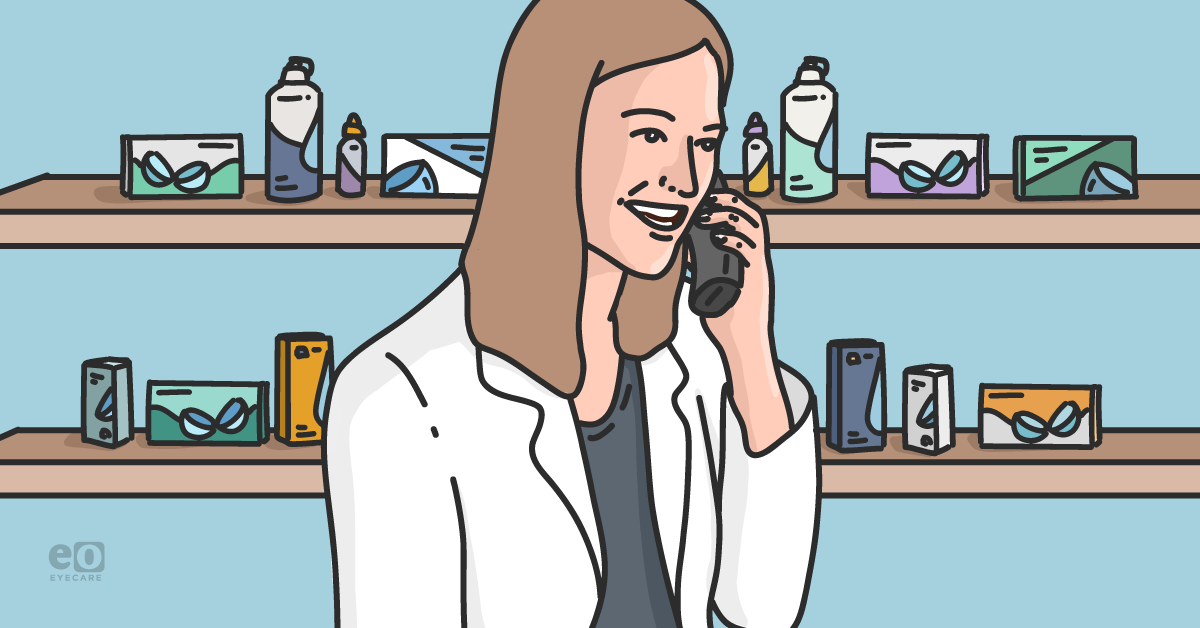In some capacity, we are always trying to improve and build our practices. “Building” a practice can encompass a variety of things like utilizing new products, bringing in more revenue, improving processes, or integrating better technology.
In all these cases, building your practice results in better services and outcomes for the patients you serve. When it comes to a
contact lens practice, building is not just about selling more boxes of contact lenses or filling every exam slot.
Consider the points below when thinking about growing your contact lens practice.
1. Invest in preventing contact lens dropout
It has been reported that a single patient who permanently
discontinues contact lens wear could result in up to $24,000 of lost revenue over that patient’s lifetime.
1 That is an astounding amount of lost opportunity for a practice. Additionally, the patient is not achieving the satisfactory contact lens wear that they sought out in the first place. As a practice, implement clinical and prescribing practices that minimize and prevent dropout in the first place.
2“Additionally, ensure that patients understand that you can offer solutions if they are not satisfied with their contact lens experience.”
Most people who discontinue contact lens wear will pursue a refit at some point,
3 so you want to make sure they are pursuing that refit in your practice. Fittings that involve regular follow-up care and open lines of communication have been shown to improve retention and dropout rates,
4 especially in
neophyte wearers.
5Make sure you are following up when you fit a new lens and implement recall strategies that encourage patients to re-visit the practice whether they have maintained contact lens wear or not. Following up does not necessarily have to involve an additional appointment on your already booked clinic schedule.
Follow-up communication from a staff member or automated email communication at regular intervals throughout the year can be effective in motivating patients who may be less than satisfied with their wearing experience to return and try again.
2. Utilize specialty contact lens modalities
Soft contact lens modalities that correct for more than just single vision, spherical refractive error are under-utilized. Toric and multifocal options are under-appreciated because doctors have assumptions that they take more time to fit and/or are not preferred by patients, leading to wasted time and resources for the practice. Those assumptions, however, are misconceptions.
Toric and multifocal soft contact lens modalities take the same amount of chair time as their single vision spherical counterparts and are consistently preferred by patients.6-9 Additionally, the cost of toric and multifocal options ranges from 25 to 60% higher than their single vision counterpart products, so selling the same number of units of a toric or multifocal soft lens option offers major revenue benefits to the practice.
By not offering a
toric option to patients with astigmatism or not introducing a multifocal to every patient with presbyopia, you are not only doing a disservice to your patients, but also to your practice by not selling a premium product when it is appropriate.
About half of all soft contact lens wearers have astigmatism magnitudes that would warrant a soft toric lens,10 but only about 37% are fitted with a soft toric option.11 Similarly, while the majority of our contact lens wearers are over the age of 40 years, only about 60% are wearing a contact lens modality that addresses both their near and distance vision.11
This means there is a big opportunity to satisfy your patients by introducing these toric and multifocal options to those who may have never tried them and grow your practice through the sale of these finalized prescriptions.
3. Always offer to upgrade
When a patient reports no major complaints with their current contact lenses at the annual exam, it is easiest to take them at their word and re-prescribe last year’s prescription. Each year, however, there is typically a new product option that was not available to that same patient last year. The patient has almost no way of knowing if there is a new contact lens option for them from year to year.
The eyecare provider often assumes that a patient will tell them if they are interested in trying something new, but most patients assume their doctor will tell them if there is a better option available. This mismatch of assumptions can lead to missed opportunities for the patient to experience an
upgraded lens-wearing experience and for the prescriber to grow their practice.
“An ‘upgrade’ might mean different things to different patients.”
For someone who has been historically content with a monthly or 2-week replacement lens, an upgrade means finally trying out a
daily disposable option. For a daily disposable wearer who is “fine” with their lenses, upgrading might mean trying the new premium daily disposable that was released 6 months after their last prescription was finalized.
By educating the patient each year about new options that might interest or benefit them, you instill confidence and loyalty in the patient. For the practice, this allows for prescriptions and sales of more premium products and increases the likelihood that the patient will continue returning in the future for contact lens care.
Conclusion: Start small
Significant growth in your contact lens practice does not have to be the result of big disruptions in your office flow and routines. Start with easy, manageable changes that involve open lines of communication with the patient and thoughtful consideration of their visual, comfort, and lifestyle needs.
These small adjustments to
exam flow and patient communication will compound over time to result in a robust contact lens practice with a more satisfied and loyal patient base.
